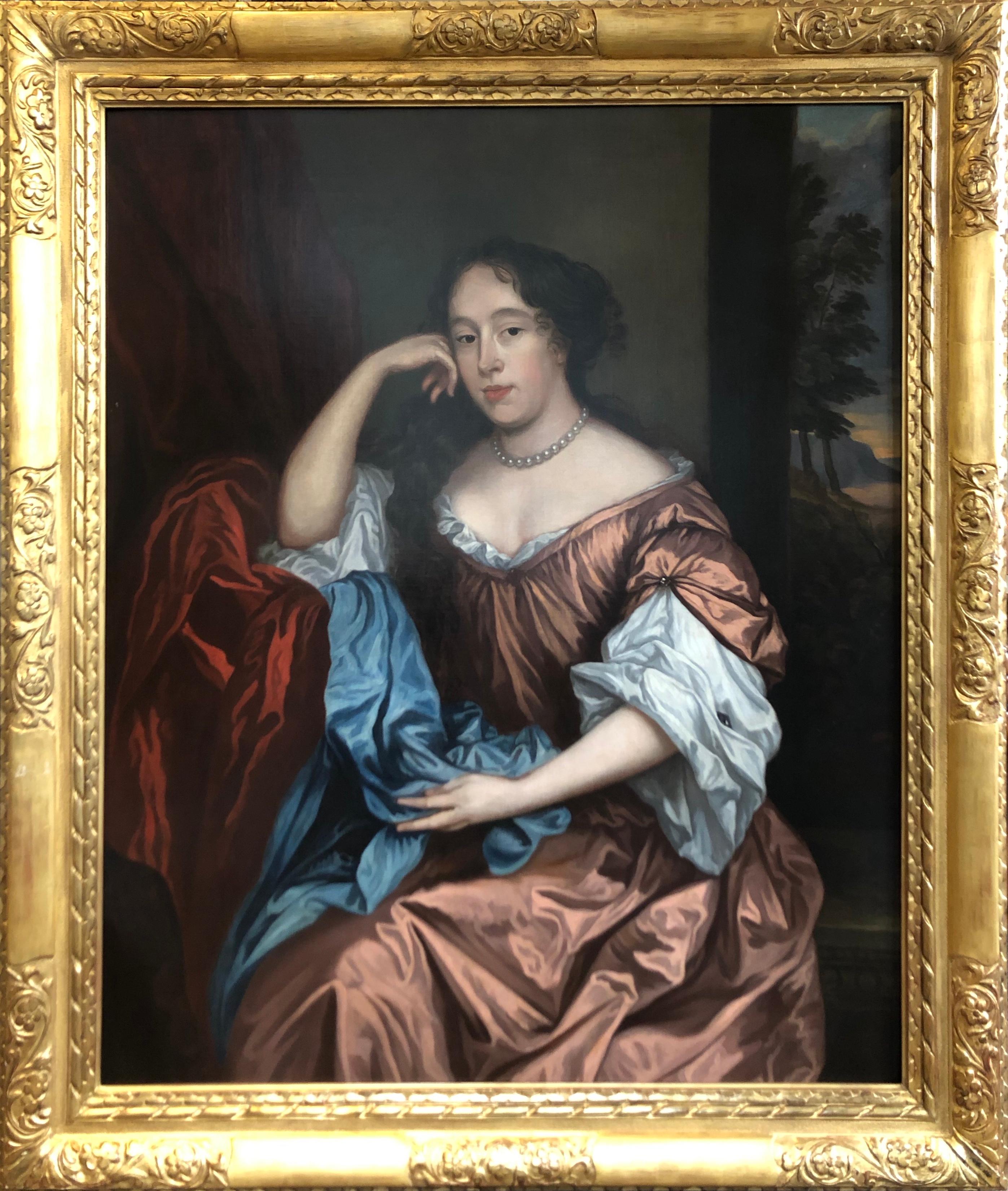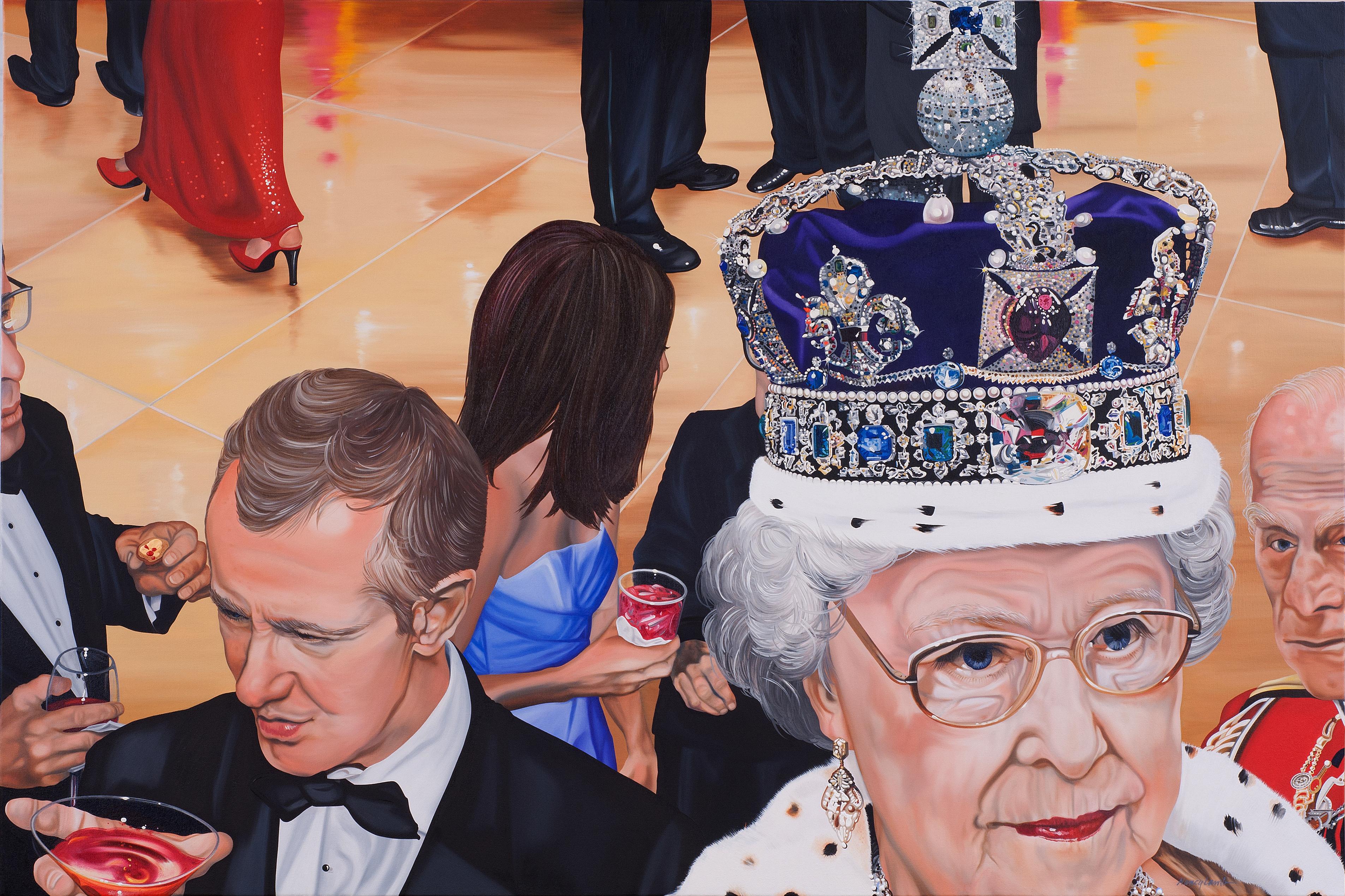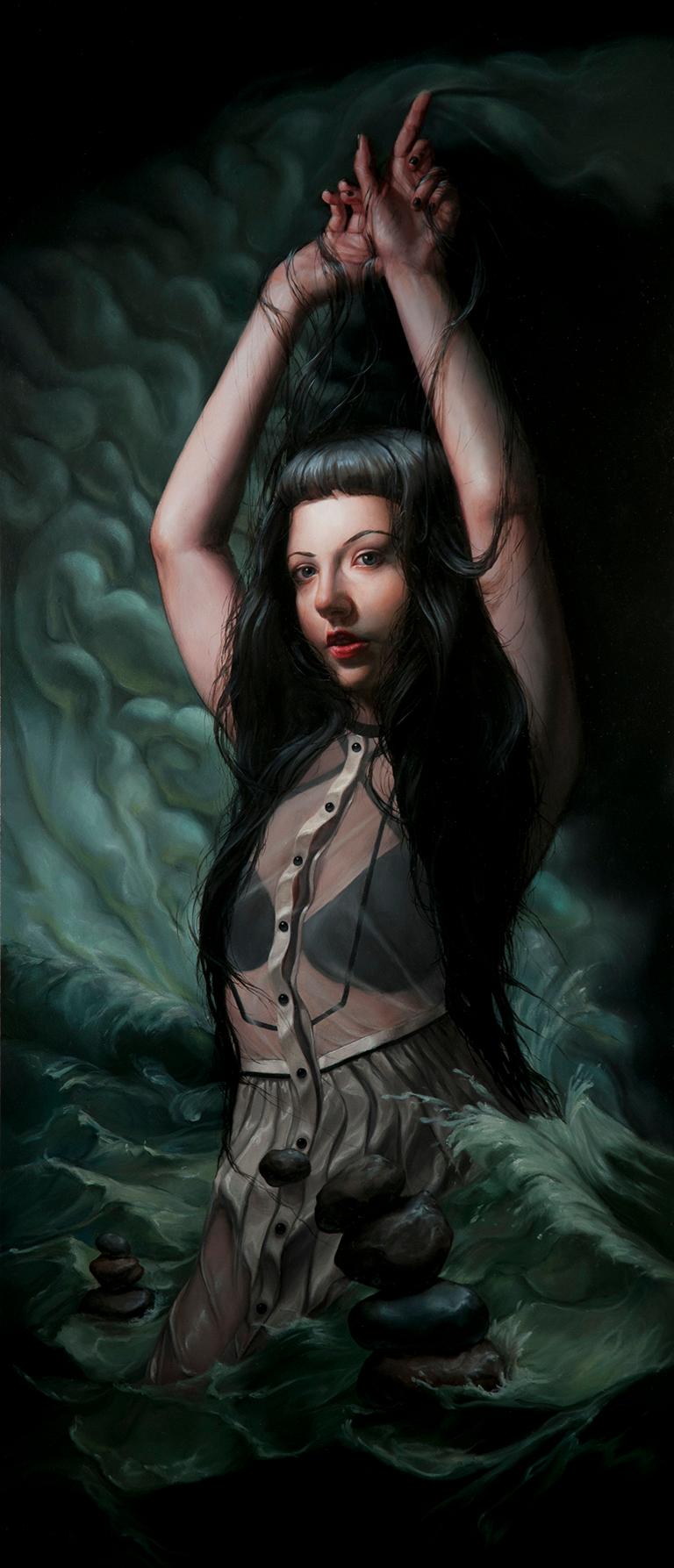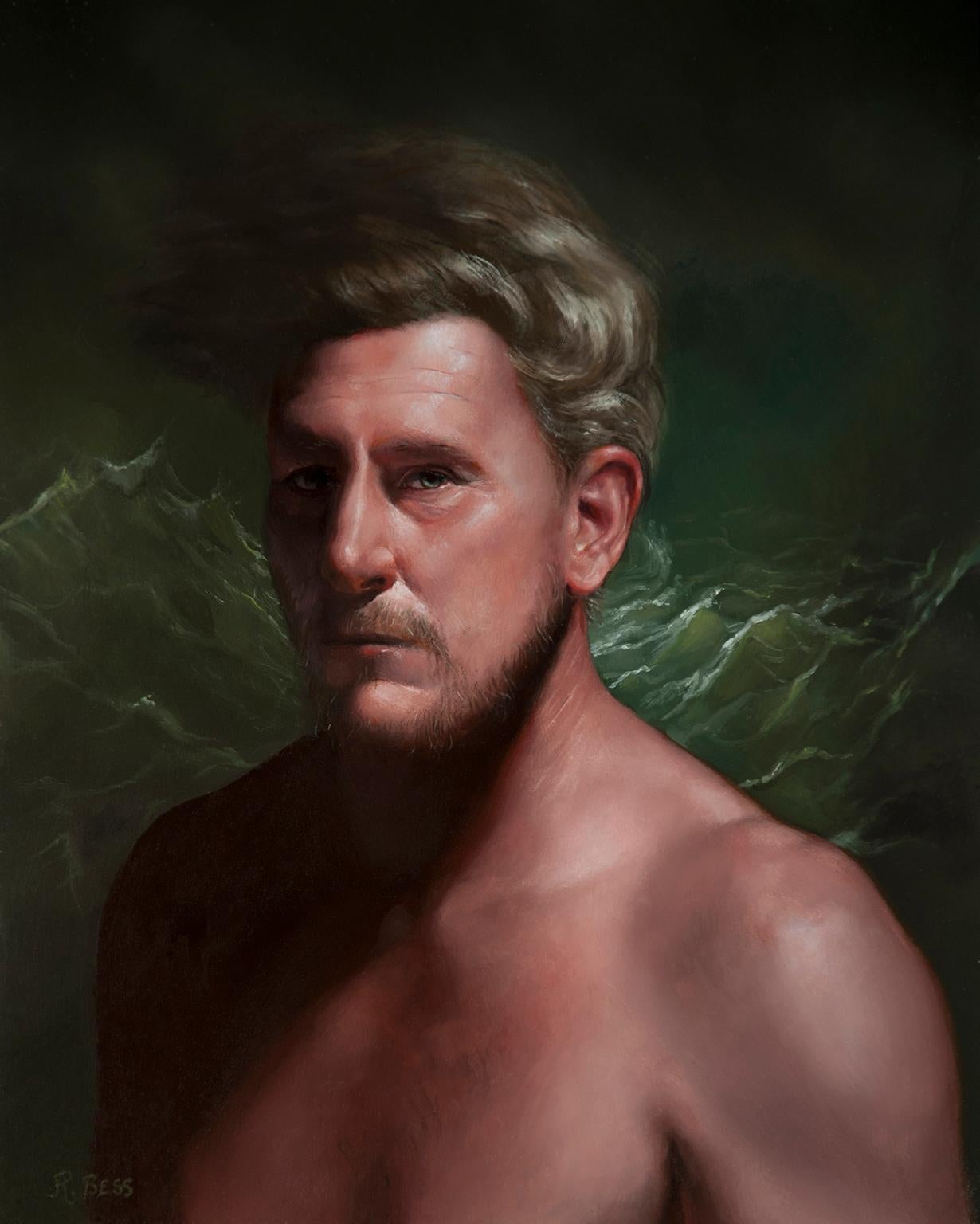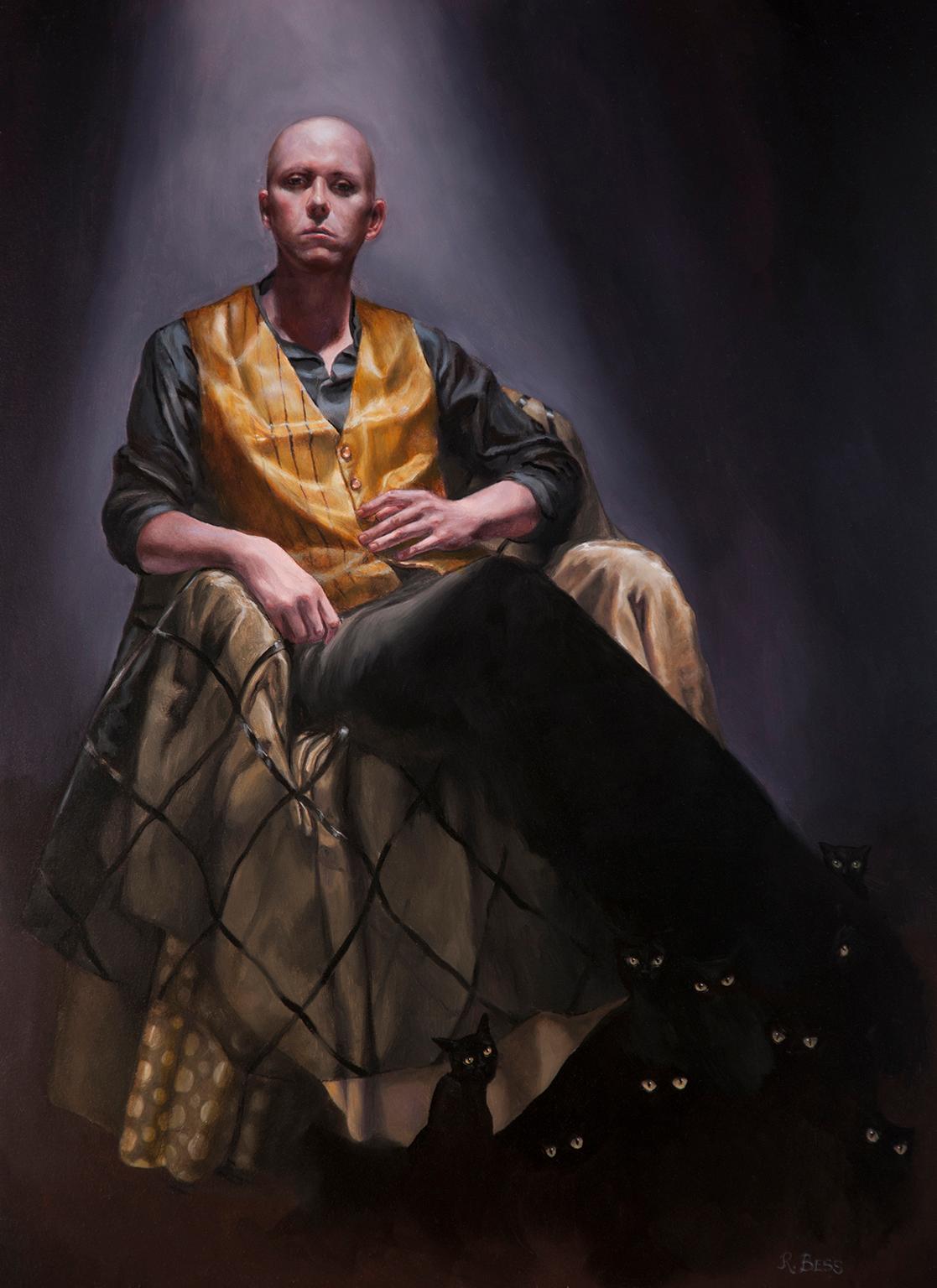Items Similar to Portrait of a woman with a toothache, circa 1900, oil on canvas
Want more images or videos?
Request additional images or videos from the seller
1 of 16
Julien Auguste HervéPortrait of a woman with a toothache, circa 1900, oil on canvascirca 1900
circa 1900
About the Item
Julien-Auguste HERVÉ (1854-1932)
Toothache, circa 1900
Oil on canvas
Signed "JULIEN HERVE" and dated lower right
61.5 x 50 cm
Born in 1854 in Basse-Indre, Loire-Atlantique, Julien-Auguste Hervé received his initial artistic training at the École nationale supérieure des arts et métiers in Angers. He moved to Versailles in 1880, where he worked for the Compagnie des chemins de fer de l'Ouest, before joining the Société des artistes indépendants in 1888. Formed in 1884, this association brought together artists who asserted a certain freedom, with the aim of presenting works to the public that were not part of the official Salon. At the same time, Julien-Auguste Hervé, who had become a drawing teacher, tried to make a living from his art, and presented paintings every year at the Salon des Indépendants.
In addition to his landscapes and other mythological and biblical scenes, it was his portraits that met with great success from the late 1890s onwards. Enthusiasts were eager to discover his astonishing paintings, which left no one indifferent.
Art critic Gustave Coquiot, who called Julien-Auguste Hervé "Master of Expressionism" in 1898, praised his Dédaigneuse, Mignonette, Hargneux and Pompette after the titles given by the artist to his figures. The artist introduces the term "expressionism", which he sometimes uses before the name ("Expressionism, Hargneux"; "Expressionism (budgetary)"), sometimes after the name ("Samson et Dalila (expressionism)"). The use of this neologism seems to reflect a certain hostility to contemporary Impressionism and Post-Impressionism. Julien-Auguste Hervé's main claim to fame is a certain realism with a strong symbolism.
The British art critic Charles Rowley used the term "expressionism" in 1880 to describe modern artists concerned with expressing emotions and passions. It was later used in Germany for the Berlin Secession exhibition of 1911, but it would be risky to establish any link, however tenuous, with the avant-garde movement of the early 20th century that retained the name.
The rare painting we present, with its unusual theme of toothache, bears witness to the artist's facetiousness.
- Creator:Julien Auguste Hervé (1854 - 1932, French)
- Creation Year:circa 1900
- Dimensions:Height: 24.22 in (61.5 cm)Width: 19.69 in (50 cm)
- Medium:
- Period:
- Condition:
- Gallery Location:PARIS, FR
- Reference Number:1stDibs: LU2661213778612
About the Seller
5.0
Vetted Seller
These experienced sellers undergo a comprehensive evaluation by our team of in-house experts.
Established in 2018
1stDibs seller since 2023
Typical response time: 5 hours
- ShippingRetrieving quote...Ships From: PARIS, France
- Return PolicyA return for this item may be initiated within 14 days of delivery.
More From This SellerView All
- Bilboquet player, 1879Located in PARIS, FRAfter an initial training at the Toulouse School of Fine Arts, Jules-Arsène Garnier joined the Paris School of Fine Arts in 1867 in Jean-Léon Gérôme's studio. As an academic artist, ...Category
1870s Figurative Paintings
MaterialsCanvas, Oil
- Portrait of the painter Louis Degallaix (1877-1951), 1910Located in PARIS, FRHenri BOUCHÉ-LECLERCQ (1878-1946) Portrait of the painter Louis Degallaix (1877-1951), 1910 Oil on canvas Signed, dated “1910” and dedicated “à mon ami Degallaix” lower right 55 x 4...Category
1910s Art Nouveau Portrait Paintings
MaterialsCanvas, Oil
- Portrait of a woman, oil on panelBy Jean BouchaudLocated in PARIS, FRJean BOUCHAUD (1891-1977) Portrait of a woman Oil on panel Signed “J Bouchaud” lower right Dimensions of the work without frame: 23.5 x 18.5 cm A native of the Loire-Atlantique reg...Category
Early 20th Century Portrait Paintings
MaterialsOil
- Aquarium, circa 1935, oil on panelBy Lydia RaddaLocated in PARIS, FRLydia Radda (1891-1967) Aquarium, circa 1935 Oil on panel Signed “Radda” lower right 13 x 16 inch Painter born in Corbeil-Essonnes in 1891, Julie Florent was active in Paris at the ...Category
Early 20th Century Modern Landscape Paintings
MaterialsOil, Paint
- Paris, Saint-Martin canal, c. 1989, oil on canvasLocated in PARIS, FREmilio Trad (né en 1953) Paris, Saint-Martin canal, c. 1989 Oil on canvas Signed lower right 25,5 x 31,5 inch Emilio Trad, an artist of Lebanese origin bo...Category
1980s Landscape Paintings
MaterialsOil, Canvas
- Poetry of the bird, surrealist drawing, 1948Located in PARIS, FRJoséphine Beaudouin (1909-2005) Poetry of the Bird, surrealist painting, 1948 Oil on canvas Signed "Joséphine Beaudouin" and dated "1948" lower left 13,7 x 10,6 inch Born in Albi in 1909, Josephine Beaudouin (née Cals) showed an early interest in drawing. At the age of twelve, she moved to Paris where her mother, Jeanne Ramel-Cals, ran a literary salon that was frequented by art world figures such as Ambroise Vollard. In 1925, while her first drawings appeared in the magazine Crapouillot, the young artist entered the School of Decorative Arts where she studied fresco painting. She married the architect Eugène Beaudouin in 1928, with whom she traveled throughout Europe. Beaudouin, a member of the Académie des Beaux-Arts, designed a series of buildings that were precursors of modern architecture in France (Clichy, Maison du Peuple; Antony, Résidence universitaire Jean Zay). Josephine Beaudouin exhibited at the Salon des Indépendants, the Salon des Tuileries, the Salon d'Automne and the Salon des Artistes Décorateurs. The work of the one that Jean Cocteau described as "bewitching" is full of mystery. Her work bears the stamp of an extraordinary personality. Indeed, Josephine Beaudouin developed a penchant for dreams at a very early age and took refuge in the works illustrated by Gustave Doré. Her technical virtuosity and overflowing imagination were praised by the critics of her time who unanimously greeted her Marmorées (ill.1). Named by René Barotte, these are paintings made on marble slabs from 1955. The artist exploits the infinite resources of the veins of this support which inspires him poetic compositions with unusual subjects. Marked by surrealism, she returns to the fantastic by delivering a prodigious creation of the mind made of dreamed cities and trompe-l'oeil. The 1948 painting that we propose probably represents a red-billed chough. The bird is a recurring theme in the work of Josephine Beaudouin, as in her life. An avid ornithologist, she kept an aviary in her Parisian home where many island birds were kept. She also built up a collection of stuffed birds. Still on this theme, the writer Claude Aveline (1901-1992), author of the poem L'Oiseau-Qui-N'Existe-Pas, invited several visual artists to freely interpret what this bird could be. The first series of works was produced between 1956 and 1963. In 1957, Joséphine Beaudouin delivered a work with a pen of great finesse, now preserved at the Centre Pompidou (ill.2). Several renowned artists also responded to the invitation of the poet such as Jean Cocteau and Ossip Zadkine. The precision of the graphics of our painting testifies to an attentive observation of the anatomy of the birds. The artist paints with great delicacy: the technique is impeccable, the drawing is careful, the material is smooth, the details are represented with great finesse and mastery. Bibliography : Fernand Pouillon...Category
1940s Surrealist Figurative Paintings
MaterialsOil, Canvas
You May Also Like
- Portrait of a Lady, After Sir Peter Lely (1610-1680) Oil PaintingBy After Sir Peter LelyLocated in Uppingham, GBOil Painting After Sir Peter Lely (1610-1680) Portrait of a Lady Housed in a Lely gold Leaf Frame. Peter Lely: In 1647 he became a member of the Pain...Category
17th Century Old Masters Portrait Paintings
MaterialsOil
- Contemporary Fabulous Portrait of The Queen with Detailed Royal Crown/JewelsBy Nancy LambLocated in Fort Worth, TXNancy Lamb (American, born 1956), sculptor and painter. Formally trained at Texas Christian University and the Fort Worth Museum of Science and History, whe...Category
2010s American Realist Figurative Paintings
MaterialsCanvas, Acrylic, Oil
- "Right Path" oil paint portrait on Dibond panelLocated in Phoenix, AZRachel Bess Right Path, 2018 oil on Dibond 35" x 15" unframed 40" x 20.5" framed Rachel Bess is known for her precise and theatrical oil paintings that ...Category
2010s Contemporary Figurative Paintings
MaterialsOil
- "Rise and Fall" portrait oil painting blonde man ocean sea wavesLocated in Phoenix, AZRachel Bess Rise and Fall , 2017 oil on Dibond 10" x 8" unframed 13.5" x 11.5" framed Rachel Bess is known for her precise and theatrical oil paintings ...Category
2010s Contemporary Figurative Paintings
MaterialsOil, Panel
- "The Violet Hour" figurative painting male with cats spotlightLocated in Phoenix, AZRachel Bess The Violet Hour, 2017 oil on Dibond 18.5" x 14.5" unframed 22" x 17" framed Rachel Bess is known for her precise and theatrical oil painting...Category
2010s Contemporary Figurative Paintings
MaterialsOil
- The Gathering After the RainBy Heather BarronLocated in Salt Lake City, UTBreath of Fresh Air, oil on panel, 48 x 36 inches, $6,000 Having grown up in England, Heather Barron innately infuses her work with a bit of British charm and decorous character. Re...Category
2010s Contemporary Figurative Paintings
MaterialsOil, Panel
